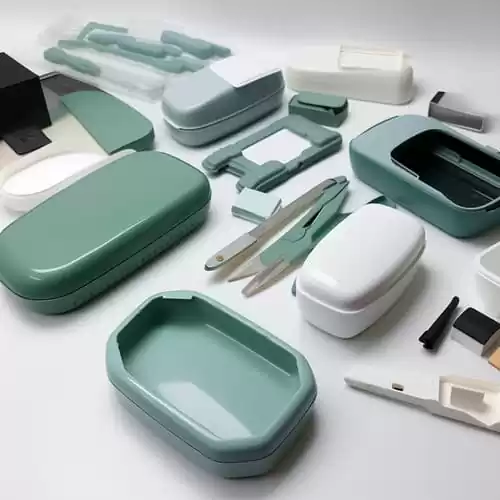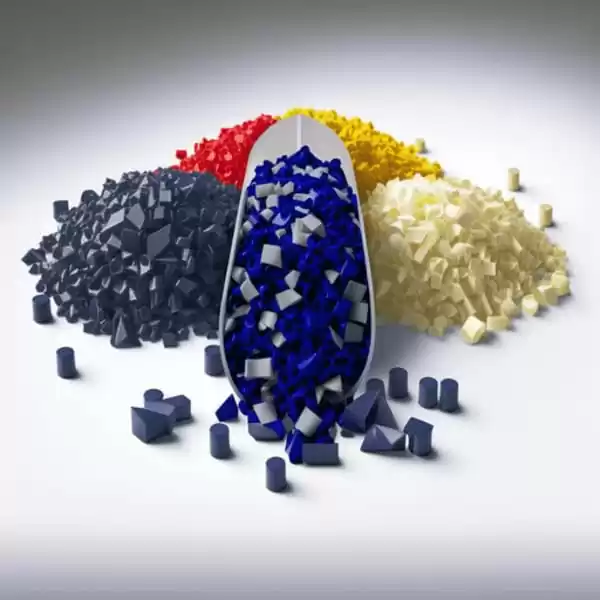Vacuum forming’s limitations include complex shapes, thin material constraints, and limited undercuts, restricting intricate and deep designs.

Principles of Vacuum Forming
Vacuum forming is a popular method for shaping plastic materials. This process heats a plastic sheet until it’s pliable, then shapes it over a mold using vacuum suction. Once cooled, the plastic retains the mold’s shape, resulting in a newly formed part.
Basic Procedure
- Preparation of the Mold: Before starting the process, it’s vital to have a precisely designed mold that will determine the final shape of the plastic.
- Heating the Plastic Sheet: A plastic sheet, often made of materials like polystyrene or polyethylene, is heated in an oven until it becomes soft and pliable. The exact temperature will vary based on the plastic type.
- Positioning over the Mold: Once the plastic is ready, it’s quickly transferred over the mold.
- Applying Vacuum: As the name suggests, a vacuum is applied, pulling the softened plastic sheet tightly against the mold. This vacuum ensures that the plastic conforms accurately to the mold’s shape.
- Cooling and Solidifying: After the plastic has been shaped, it’s allowed to cool and harden, firmly taking on the shape of the mold.
- Releasing and Trimming: Once solidified, the newly formed plastic part is released from the mold.
Learn more about the basic procedure of vacuum forming on Wikipedia.
Materials Commonly Used
- Polystyrene (PS): Often used for packaging and disposable containers, polystyrene is lightweight and can be clear or colored.
- Polyethylene (PE): Known for its toughness and flexibility, PE is commonly used for items like trays and linings.
- Acrylic (PMMA): Often referred to as Plexiglas, acrylic is transparent and has glass-like clarity.
- Polyvinyl Chloride (PVC): This versatile plastic has applications ranging from medical equipment to pipes.
- Polypropylene (PP): Due to its high melting point, PP is a popular choice for containers that need to withstand high temperatures.
- ABS (Acrylonitrile Butadiene Styrene): Known for its toughness and rigidity, ABS is often used for automotive parts and toys.
Advantages of Vacuum Forming
Vacuum forming stands out as a prominent method in the realm of plastic molding and shaping. When compared to other molding techniques, vacuum forming brings forth a set of benefits that can drastically enhance manufacturing outcomes.
Cost-effectiveness
Vacuum forming proves to be a cost-effective method in multiple ways:
- Initial Setup Costs: Vacuum forming requires comparatively lower initial investment for machinery. For example, a basic vacuum forming machine can cost between $10,000 to $50,000, while an injection molding machine might range from $50,000 to $300,000.
- Material Waste Minimization: This process ensures better material usage. Typically, only around 5% of the material ends up as waste, compared to other processes where wastage can go up to 20%.
- Maintenance and Running Costs: The maintenance costs for vacuum forming machines are relatively low. On average, yearly maintenance might cost around $1,000 to $3,000, which is more affordable than many other plastic forming machinery.
More insights into the cost-effectiveness of vacuum forming on Wikipedia.
Flexibility in Design
The flexibility that vacuum forming provides in terms of design is quite commendable:
- Mold Alterations: Changing the mold in vacuum forming is straightforward. This means that manufacturers can easily switch between different product designs without incurring significant costs. For example, changing a mold can take as little as 1 hour in vacuum forming, while it might take days in other methods.
- Range of Materials: A variety of materials can be used in vacuum forming, ranging from flexible polyethylene to rigid acrylic. This allows for versatility in product quality and aesthetics.
Delve deeper into the design flexibility of vacuum forming on Wikipedia.
Rapid Prototyping Capability
In the age of fast-paced manufacturing, the ability to prototype quickly is invaluable:
- Turnaround Time: With vacuum forming, a prototype can be produced within hours. For a simple design, it might take as little as 2 to 3 hours from the initial concept to a tangible prototype.
- Iterations and Testing: Given the rapid production capability, multiple iterations of a design can be tested in a single day. This dramatically reduces the time to finalize a product design.
- Market Introduction: Due to the speed of prototyping, products can reach the market faster.
Limitations of Vacuum Forming
These limitations can influence design decisions and product feasibility, especially when considering large-scale production or intricate designs.
Thickness Constraints
Vacuum forming usually limits the thickness of the plastic sheets that can be molded effectively:
- Maximum Thickness: Generally, plastic sheets between 0.1mm to 6mm are used for vacuum forming. Pushing beyond this thickness, especially towards the 10mm mark, becomes challenging as the plastic may not heat uniformly or mold precisely over the tool.
- Uneven Distribution: The process might lead to varied thickness across the formed part. Edges often turn out thinner compared to the central portions due to material stretch.
More on thickness challenges in vacuum forming on Wikipedia.
Undercuts and Intricate Details
Creating intricate details or undercuts in a product is one of the major challenges in vacuum forming:
- Lack of Undercuts: The nature of the process makes it nearly impossible to produce parts with undercuts, as the formed plastic needs to be removed without damage.
- Detailing Issues: Vacuum forming may not capture extremely intricate details of a mold.
Understanding the intricacies in molding on Wikipedia.
Material Selection Restrictions
While vacuum forming accommodates various materials, not all plastics are suitable:
- High-Temperature Plastics: Plastics with exceptionally high melting points, such as certain grades of PEEK or PAEK, are challenging to use in vacuum forming due to the energy and time required to heat them.
- Brittleness: Brittle materials might crack or break during the forming process.
Learn more about materials in vacuum forming on Wikipedia.
Dimensional Accuracy
Achieving precise dimensions is another challenge:
- Tolerance Levels: While vacuum forming can be accurate, achieving tolerances tighter than ±0.5mm is difficult, especially for larger parts.
- Shrinkage: As the plastic cools post-forming, shrinkage can occur, affecting the final dimensions. In some materials, shrinkage can be as high as 2%, leading to a deviation in expected product size.
Delving into dimensional challenges in vacuum forming on Wikipedia.
Post-forming Operations
- Trimming and Waste: The formed product often requires trimming, leading to material waste. Depending on the product’s design, waste percentages can range from 5% to 20%.
- Secondary Processes: Adding holes, slots, or additional features usually requires secondary processes, which can add to the overall production time and cost.

Comparison with Other Molding Techniques
Vacuum forming, as a popular plastic molding technique, often gets weighed against other molding processes in the industry. Each method has its own set of advantages, applications, and limitations. Here’s a comparative analysis of vacuum forming against some other prevalent molding techniques.
Injection Molding
Injection molding involves melting plastic granules and injecting them into a mold under high pressure.
- Speed and Volume: Injection molding is ideal for producing large quantities of parts quickly. A single cycle can take as little as 15 seconds, enabling the production of thousands of parts in a day.
- Detail and Precision: This method can capture intricate details, achieving tolerances as tight as ±0.01mm.
- Material Diversity: Supports a vast range of thermoplastic materials.
- Cost: While it offers high precision, the initial investment for an injection molding machine can range from $50,000 to $300,000. Additionally, mold costs can be significant, especially for complex parts.
Blow Molding
- Product Range: Best suited for hollow parts such as bottles, containers, and other similar products.
- Speed: A typical cycle time for blow molding can range from 20 seconds to a few minutes, depending on the product’s size and complexity.
- Cost: Initial machine costs can be lower than injection molding, with prices starting from around $25,000.
- Material Limitations: Predominantly uses materials like HDPE, LDPE, and PET.
- Waste: Flash, the excess plastic around the molded product, needs to be trimmed, leading to some waste.
Deep dive into blow molding on Wikipedia.
Compression Molding
In compression molding, a preheated plastic material is placed into an open mold cavity. The mold then closes, and pressure is applied, forcing the material to take the mold’s shape.
- Materials: Commonly used for thermosetting plastics, elastomers, and some thermoplastics.
- Cycle Time: Generally slower than injection molding, with cycle times ranging from 1 to 15 minutes, depending on the material and part size.
- Detail: While it can capture moderate details, it’s not as precise as injection molding.
- Cost: Mold costs are typically lower than injection molding, but per-part costs might be higher due to longer cycle times.
- Applications: Popular for making large parts, automotive components, and sometimes even electrical parts.




